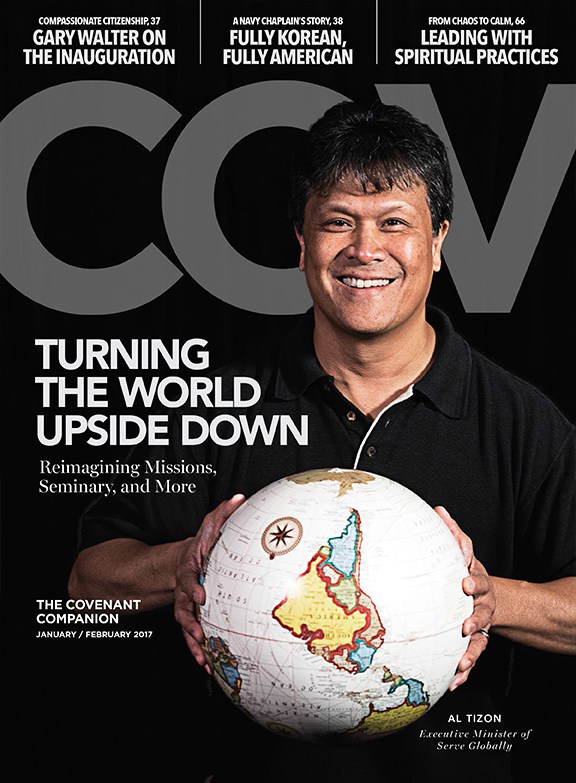History recounts numerous missional movements that have sought to reach people far from God through cultural accommodation. The Jesuit mission to China and Patrick’s Celtic way of evangelism are two examples of how the missionary Church practiced cultural adaptation to further God’s mission.
George Hunter’s (2010) work on the Celtic mission informs us Patrick and his men engaged the Celtic imagination in presenting the gospel through the creative arts of story and song and drama, adapting their mission to pagan culture to induce Celtic awakening. Similarly, to be effective in the contemporary world, evangelism methodologies in the West are adapting to Western culture shifts. Two such examples follow.
Encounter vs. Information
Effective evangelism emphasizes experience over information in an increasingly post-Christian, and dubbed by many, postmodern context. In previous generations, evangelism methods appealed to reason followed by calling for a commitment to Christ based on a logical presentation of the gospel.
Some missional communities reverse the order today and find translating the gospel to contemporary cultures is more fruitful when an encounter with God precedes explanation about God. In such contexts, non-Christians are led to experience God before receiving a download of information about God.
Experiencing God may take the form of emotional healing from harm imposed by others or from personal addiction. For instance, Christians ministering at Burning Man (a self-expression and arts festival that annually draws some 60,000 people, many millennials) adapt the cultural tools of the festival to reach “Burners” through encounter.
Burning Man is an experimental society and participants dabble in everything from drug-induced altered states of consciousness—often associated with artistic creativity—to consciousness-raising projects. Personal and global transformation are explicit goals of Burning Man, as is taking responsibility in working toward a greater future.
The festival’s implicit goals include community building, catharsis, and inner healing. Sacred Spaces, a Burning Man theme camp, displays a menu board of workshops at its three “temples” of (1) self-perception, (2) truth and discernment, and (3) forgiveness and rediscovery. Workshop topics include energy meditation, sacred geometry, how to connect to your spirit guides, Hatha Vinyasa Yoga, Alchemy, conscious breath work, social change, Chakra dance, Shamanic death and rebirth, and more—what westerners would consider alternative spiritualties.
Christian groups acculturate at Burning Man by providing a “menu” of spiritual experiences to festival participants who show up at their camps. Ministries at Burning Man find prayer is often the vehicle for encountering God. Dream interpretation and heart “massage” are popular among young adult Burners who encounter God through healing and listening prayer when believers help them identify their spiritual blockage, unresolved wounds, brokenness, and addictions.
Burners may spend hours being led into an encounter with God by two or three believers who prayerfully and prophetically translate this experience and the gospel to them. Once spiritually awakened, Burners return during the 8-day festival for another powerful encounter with God and will bring their friends with them. Additionally, Christians adopt fresh names for God, His Spirit, and Jesus to amiably navigate negative stereotypes and spiritual baggage Burners may carry influenced by cultural representations and misrepresentations of Christianity.
Other groups also attempt to translate their gospel to Burners through new and ancient practices. For example, Christians Scientists offer a Healing Foot Wash Camp as their “gift” to the Burning Man community. Once Burners encounter God, they become open to being informed by propositional truth about God.
Scripts vs. Spiritual Conversations
Similarly to the previous generation’s evangelism methodology of information download, people were often resourced in the past by formulaic presentations of the gospel. Evangelistic scripts like The Four Spiritual Laws and Steps to Peace with God were found to be evangelistically fruitful. Debate and argument were additionally effective means of engaging people with the truth of the gospel.
Apologetic methodology continues to be helpful in some current contexts (i.e., see Seeking Allah Finding Jesus by Nabeel Qureshi). The previous Christian generation might assume that their non-Christian audience shared their belief and trust in absolute facts, observations, and logic, and therefore tended to approach evangelism with argumentation, evidence, and reason.
Those assumptions are not always accurate today.
Cultural observers note that as culture shifts to more postmodern epistemologies, non-Christian audiences no longer assume there is absolute truth, but that truth is biased and facts are socially constructed based on assumption.
What’s more, people today are less interested in being “taught” when they can become “experts” by educating themselves through accessing information within seconds using the Internet. Popular culture emphasizes discovery, journey, and narrative over apologetics, debate, and persuasion. Evangelism that is fruitful today looks more like story than propositional truth. Gospel illustrations that find influence with non-Christians tell God’s story and how our own story fits in with God’s larger mission. One good example of this is James Choung’s gospel illustration, The Big Story, which has found to be effective on university campuses over the past decade.
Most significant is that younger generations basically don’t want a script or even a verse—but they do want to converse! Recent Pew (2012) and ARIS (American Religious Identification Survey, 2008) research on the Rise of the Nones assure us even those who are religiously unaffiliated generally still believe in God, pray frequently, enjoy community, and often care about significant causes like human trafficking—providing plenty of fodder for thick spiritual conversations for relational evangelism.
Encounter and story are two ways evangelism is effectively adapting to contemporary culture.
(Editor’s note: This originally appeared in the “Gospel Life” blog.)


Comments